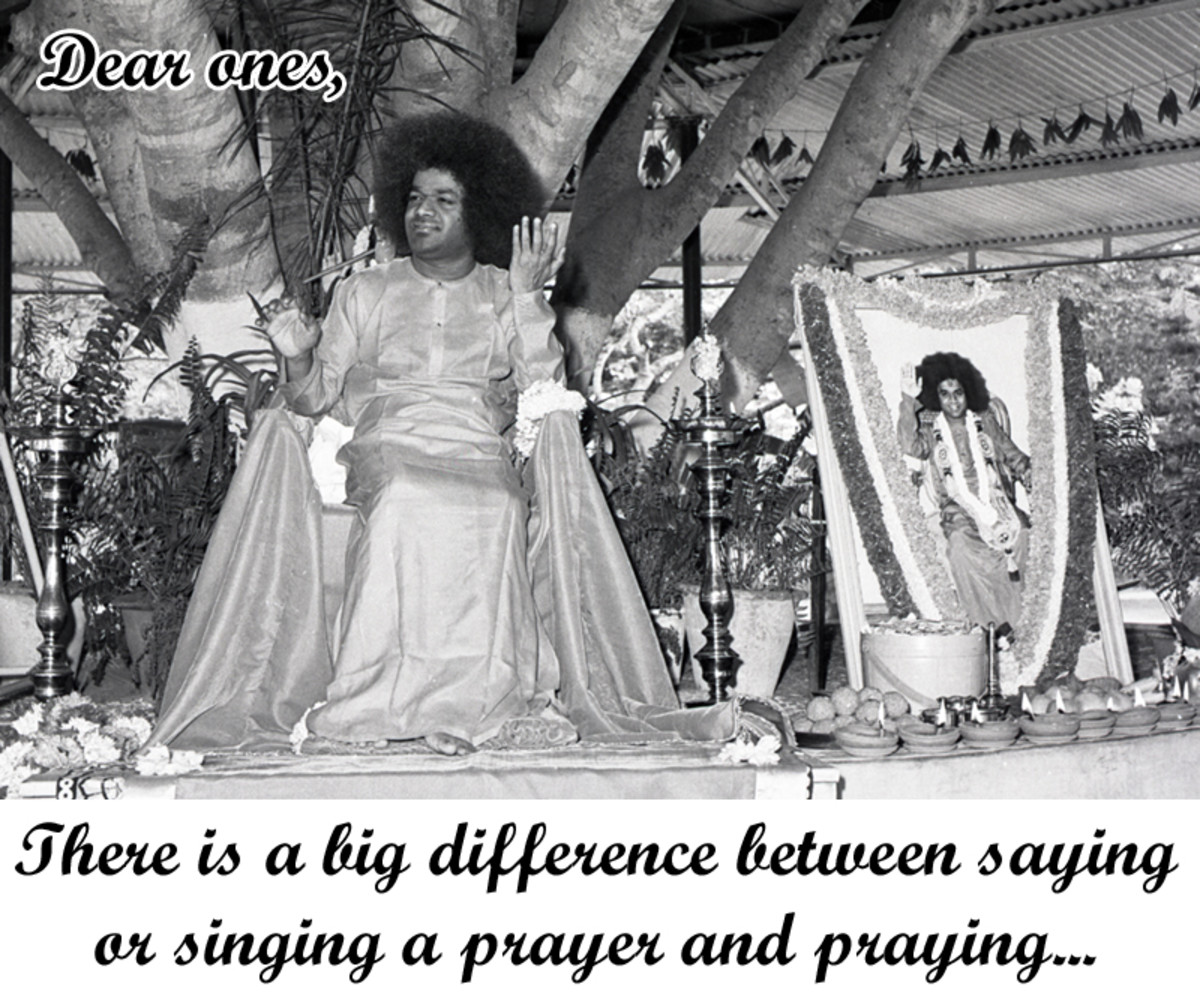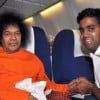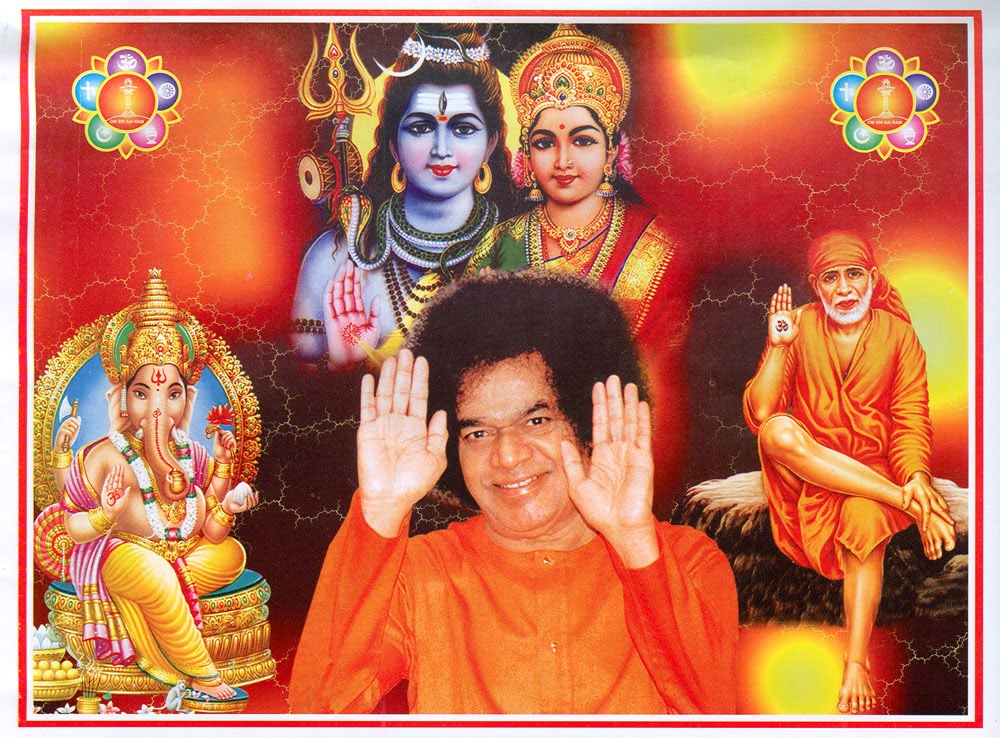Diferencia entre decir una oración y la oración

Fue por pura casualidad que me pasó a venir a través de una charla dictada por el Francisco en octubre de 2013 . En su charla, se dilata sobre los motivos de la gente girando arrogante y hostil. Según él, la causa de tal comportamiento fue la falta de oración. Explicó su postura afirmando que la fe de alguna manera se degrada en una ideología y que asusta y ahuyenta a la gente de la 'fe' en su verdadero sentido. También dijo que se crea una distancia entre las personas. Fue en ese contexto que hizo una declaración que golpeó mi corazón:
"Hay una diferencia entre la oración y simplemente diciendo oraciones", dijo, "la gente se deja llevar por la ideología y repetir oraciones en lugar de realmente orar."
Que me tenía preocupado y en el que el pensamiento profundo, mi memoria criados un episodio de la vida de una mujer que pone de relieve la diferencia entre la oración y decir una oración. El episodio es especial en otro sentido también - lo dio a luz a un bhajan que a menudo se canta en presencia de mi Maestro y mejor amigo, Bhagavan Sri Sathya Sai Baba . Pero antes de profundizar en ese episodio, que sólo sería apta para recordar un poco de historia.
adaptación de un cuento popular ruso León Tolstoi

Los Tres Ermitaños
El gran pensador ruso, filósofo y escritor, León Tolstoi ha escrito un hermoso cuento sobre la oración. Se titula la historia como Los Tres Ermitaños . Para aquellos que no son conscientes de ello, la historia es sobre la lección aprendida por un obispo a bordo de un barco de pesca. Al ser un cristiano devoto, se pone muy curiosa cuando se escucha una conversación centrada en tres ermitaños que viven en aislamiento en una isla. Estos ermitaños son aparentemente trabajando para su salvación final. El obispo expresa un fuerte deseo de cumplir con los ermitaños.
Encontrarse cara a cara con ellos, les pide lo que hacen para su salvación. Ellos mueven la cabeza en humildad y decir que simplemente seguir repitiendo una oración - "Tres de ellos son os, tres son nosotros, ten piedad de nosotros" Al oír esto, el obispo siente que debe ayudar a cabo. Se les enseña el significado de la doctrina de la Trinidad y cómo orar correctamente. Les enseña la oración del Señor, Padre nuestro es Él en el Cielo ... ". Hacer que se repiten hasta altas horas de la noche, el obispo abandona la isla sólo previa comprobación de que él había ayudado a los ermitaños.
Un par de horas más tarde, el obispo ve luces brillantes se dirigió directamente hacia el barco. Él la confunde con un barco más grande. Cuando las luces se acerquen, a su total asombro, el obispo ve a los tres ermitaños, corriendo a través de las aguas mano a mano hacia el barco. Ellos gritan,
"Hemos olvidado su enseñanza, servidor de Dios. Mientras seguimos repitiéndolo recordábamos, pero cuando dejamos de decir que durante un tiempo, una palabra abandonaron, y ahora se ha ido todo a pedazos. Podemos recordar nada de él. Enséñanos de nuevo ".
El obispo humilde y sabia ahora, las respuestas a los ermitaños: "Su propia oración alcanzará el Señor, hombres de Dios no es para que te enseñe Por favor, incluya en sus oraciones..." Los ermitaños acaba de dar la vuelta y volver a su isla. Ellos nunca aprenden cualquier oración en su vida y sin embargo pasan por completo en la oración.
Los enlaces para descargar unos bhajans compuestas por la Sra Parvathy Mahadevan
Por favor, copiar y pegar los enlaces en el navegador para descargar los bhajans.
1. http://dl.radiosai.org/MBV_AKHANDA_BHAJAN_SHIVA_NANDEESHWARAA.mp3
2. http://dl.radiosai.org/MBV_SARVA_DHARMA_TUMA_HO_SHYAMA.mp3
La historia de Parvati Shiva y su
La señora Parvathy Mahadevan era un habitual en el grupo de bhajans las Damas Brindavan que tuvo el privilegio de cantar por su Señor, Bhagavan Baba, cada vez que estaba en el ashram de Bangalore. La oportunidad era única porque en otro lugar, siempre sería los estudiantes del Instituto Sri Sathya Sai de Educación Superior que tuvo la oportunidad de cantar para Swami. La señora Parvathy Mahadevan tenía otra bendición especial de su Señor también - La capacidad de componer bhajans con bellas melodías y letras profundas.
Como se suele decir, los talentos y habilidades de tomar una hasta un cierto nivel. Genios, sin embargo, se crean a partir de la inspiración profunda dentro de la cual va más allá de los reinos de las habilidades y talentos. A pesar de un septuagenario, Parvathy tía era una de esas genio porque la inspiración desde dentro no busca edad! De hecho, ella había compuesto varios de los bhajans que se cantaban regularmente en presencia de Swami. Ejemplos de su composición incluyen la desgarradora "Tum Ho Shyam Ram Rahim", y el temor llenas "Nandishwara Hey Nataraja".
Swami la había bendecido con un Shivalinga, la representación globular de Shiva la que adoraba religiosamente todos los días. En varias ocasiones, incluso cuando Swami estaba en su ashram de Bangalore, en Whitefield, Parvathy tía sería un poco tarde para las sesiones de bhajans porque ella no se movió de su casa hasta que ella se había completado el culto. En esos momentos, ella se precipitaría después de su culto en su característica de estacionamiento Fiat. En una ocasión, Swami había comentado jocosamente,
"Me pregunto por qué en la tierra que le di linga! Ella no está llegando incluso para mi darshan!"
Pero ese era su entrega y dedicación en el linga. Después de la separación de su marido, Parvathy tía parecía haber decidido que su vida estaba destinado 'sólo para Shiva. (Para aquellos que no son conscientes, es la diosa Parvati, consorte del dios Shiva.) Ella incluso decir que Swami desde que la había dotado de las linga materializadas, que tenía la responsabilidad de asegurar su culto apropiado. Swami sólo sonreír a esto.

El robo Bhajan
Una noche, mientras se sentaba en silencio y el fondo de su culto, el cielo se volvió nublado y comenzó a llover gatos y perros. Como es común en Bangalore durante esos días, también hubo un corte de energía y todo se volvió oscuro alrededor de la señora que vivía sola en su casa. Pero eso no impidió que su culto. Ella indiferencia continuó con su rutina de orar antes de la linga. Desconocido para ella, un ladrón había entrado en la casa y estaba hurgando en silencio entre las cosas para hacer un buen robar.
Cuando no se encontró nada de gran valor en la casa, sus ojos se posaron en el Mangalsutra que adornaba el cuello de Parvathy tía. El Mangalsutra es el símbolo de una mujer india de matrimonio y casi siempre se hace de oro. Este collar de oro era visible debido a la luz de la lámpara en el altar. Al ver a la dama en silencio absorto en su culto, que sigilosamente se trasladó a ella e hizo un intento de arrebatar el Mangalsutra de su cuello. A pesar de que él tiró de ella con fuerza, Parvathy tía se despertó de sus meditaciones. Se dio cuenta de lo que ocurría y se enojó mucho.
Su cólera, sin embargo, no estaba dirigida a que el ladrón - que se dirigía contra Swami!
"Cuando estoy aquí comprometidos en su culto, ¿por qué me molestó tanto? Esto no está bien. Señor, tú eres mi Shiva, mi Rudra. Es su deber de asegurar que mi adoración se puede completar ".
Su ira no era debido al hecho de que estaba siendo robado. Era la expresión de su dolor al ser molestado en su culto! Que el dolor y la rabia se manifiesta como una fuerza de bhajans sintonizado. La vieja tía de setenta años estalló con una nueva composición de la marca,
Sindho Karuna Shiva Shambho
Kamala Nayana Sai Shiva Shambho
Kali Yuga Deva Deena bandho
Kalimala Bhanjana Sai Shambho
(Haga clic aquí para descargar este bhajans que se queden)
De hecho, es una cosa triste que el autor no puede producir esa poderosa melodía por escrito. Sin embargo, el estallido espontáneo que se produjo sin su conocimiento consciente llevó a este significado:
"Oh! Océano de compasión, mi Señor Shiva, mi ojos de loto Señor Shiva Sai! Usted es el Señor de este Kali Yuga; quien es el amigo de los oprimidos. Y por lo tanto, es su deber de destruir la suciedad y defectos de la Kali Yuga ".
Entonces, ella miró directamente a los ojos de su agresor y proclamó:
"No pienso que estoy solo. Tendrá que lidiar con su ira si se intenta nada ".
El ladrón parecía conmocionado. Era como si la anciana quien pensó que fácilmente podría dominar estaba siendo vigilada por una fuerza inimaginable. Su broche en su Mangalsutra afloja y se deslizó. El cuerpo del ladrón parecía temblar y temblar, temblar y agitar. Parecía estar en un sueño y, en ese estado, que acaba de cumplir e izquierda, deslizándose en silencio lejos! Parvathy tía era seguro y el mundo era más rico por otro hermoso bhajan!

Una nota sobre la oración
La oración no se trata de hacer algo extraordinario. Se trata de hacer algo ordinario de una manera extraordinaria. Cada uno de nosotros están sujetos a nuestras emociones - la felicidad, la ira, los celos, la emoción. La diferencia entre yo y un hermoso devoto como Parvathy tía es que mientras dirijo mis emociones a quien / lo que lo está causando, un devoto dirige hacia el mismo Dios y sólo Dios. Dos cosas se consiguen con esto:
1. El devoto está en contacto constante con Dios y Dios se convierte en el centro de su / su vida.
2. El devoto es capaz de ver a Dios en todas las situaciones y condiciones - el primer paso hacia la realización de la Realidad Última que todo es uno.
Cuando uno está en un estado tal, que no importa lo que la oración se dice, lo que uno canta mantras, himnos lo que se canta o lo que uno Azaan grita. Lo que se dice se convierte en una oración! Y que pone claramente de relieve la diferencia entre decir una oración y la oración.
TRADUCCION NO OFICIAL
Difference between saying a prayer and praying

It was purely by chance that I happened to come across a talk delivered by the Pope Francis in October 2013. In his talk, he dilated on the reasons for people turning arrogant and hostile. According to him, the root cause for such behaviour was the lack of prayer. He explained his stance stating that faith somehow degrades into an ideology and that frightens and chases away people from the 'faith' in its true sense. He also said that it creates a distance between people. It was in that context that he made a statement that struck my heart:
"There is a difference between praying and simply saying prayers", he said, "people get carried away by ideology and repeat prayers instead of actually praying."
That set me thinking and in that deep thought, my memory brought up an episode from the life of a lady which highlights this difference between praying and saying a prayer. The episode is special in another sense also - it gave birth to a bhajan that is often sung in the presence of my Master and best friend, Bhagawan Sri Sathya Sai Baba. But before I delve into that episode, it would only be apt to recollect a little story.
Leo Tolstoy's adaptation of a Russian folktale

The Three Hermits
The great Russian thinker, philosopher and writer, Leo Tolstoy has written a beautiful short story on prayer. He titled the story as The Three Hermits. For those who are unaware about it, the story is about the lesson learnt by a bishop aboard a fishing boat. Being a devout Christian, he gets very curious when he overhears a conversation centering on three hermits living in isolation on an island. These hermits are apparently working for their ultimate salvation. The bishop expresses a strong desire to meet the hermits.
Coming face to face with them, he asks them what they do for their salvation. They shake their heads in humility and say that they just keep repeating a prayer - "Three are ye, three are we, have mercy upon us." Hearing this, the bishop feels that he should help them out. He teaches them the meaning of the doctrine of the Trinity and how to pray correctly. He teaches them the Lord's Prayer, 'Our Father Thou Art in Heaven...'. Make them repeat late into the night, the bishop leaves the island only after satisfying himself that he had helped the hermits.
A couple of hours later, the bishop sees bright lights headed straight towards the boat. He mistakes it for a bigger boat. As the lights draw nearer, to his utter amazement, the bishop sees the three hermits, RUNNING across the waters hand-in-hand towards the boat. They shout out,
"We have forgotten your teaching, servant of God. As long as we kept repeating it we remembered, but when we stopped saying it for a time, a word dropped out, and now it has all gone to pieces. We can remember nothing of it. Teach us again."
The bishop humbled and wise now, replies to the hermits: "Your own prayer will reach the Lord, men of God. It is not for me to teach you. Please include me in your prayers. " The hermits just turn around and walk back to their island. They never learn any prayer in their life and yet spend it completely in prayer.
Links to download a few bhajans composed by Mrs. Parvathy Mahadevan
Please copy and paste the links in the browser to download the bhajans.
1. http://dl.radiosai.org/MBV_AKHANDA_BHAJAN_SHIVA_NANDEESHWARAA.mp3
2. http://dl.radiosai.org/MBV_SARVA_DHARMA_TUMA_HO_SHYAMA.mp3
The story of Parvati and her Shiva
Mrs. Parvathy Mahadevan was a regular in the Brindavan Ladies' bhajan group that had the unique privilege of singing for its Lord, Bhagawan Baba, whenever He was at the Bangalore ashram. The chance was unique because elsewhere, it would always be the students of the Sri Sathya Sai Institute of Higher Learning that got the chance of singing for Swami. Mrs. Parvathy Mahadevan had another special blessing from her Lord too - The ability to compose bhajans with beautiful tunes and profound lyrics.
As they say, talents and skills take one up to a certain level. Geniuses, however, are created from inspiration deep within which goes beyond the realms of skills and talents. Though a septuagenarian, Parvathy aunty was one such genius because inspiration from within does not seek age! In fact, she had composed several of the bhajans that were sung regularly in Swami's presence. Examples of her composition include the heartrending "Tum Ho Shyam Ram Rahim", and the awe-filled "Nandishwara Hey Nataraja".
Swami had blessed her with a Shivalinga, the globular representation of Lord Shiva which she would religiously worship every day. On several occasions, even when Swami was at His Bangalore ashram in Whitefield, Parvathy aunty would be a bit late for the bhajan sessions because she would not move out of her house till she had completed the worship. At such times, she would rush after her worship in her characteristic Fiat car. On one such occasion, Swami had remarked jocularly,
"I wonder why on earth I gave her that linga! She is not coming even for my darshan!"
But that was her devotion and dedication to the linga. After the separation from her husband, Parvathy aunty seemed to have decided that her life was meant 'only for Shiva'. (For those that are unaware, Goddess Parvati is the consort of Lord Shiva.) She would even tell Swami that since He had gifted her with the materialized linga, she had a responsibility to ensure its proper worship. Swami would only smile at this.

The burglary bhajan
One evening, as she sat silent and deep in her worship, the sky turned overcast and it began to rain cats and dogs. As is common in Bangalore during such days, there was also a power cut and everything went dark around the lady who lived alone in her home. But that did not deter her worship. She nonchalantly continued with her routine of praying before the linga. Unknown to her, a burglar had got into the house and was silently rummaging among things to make a good steal.
When he did not find anything of great value in the house, his eyes fell on the Mangalsutra that adorned the neck of Parvathy aunty. The Mangalsutra is an Indian woman's symbol of marriage and is almost always made of gold. This gold necklace was visible because of the light from the lamp in the altar. Seeing the lady silently absorbed in her worship, he stealthily moved to her and made a bid to snatch the Mangalsutra away from her neck. Even as he tugged at it hard, Parvathy aunty was awakened from her meditations. She realized what was happening and became very angry.
Her anger, however, was not directed at the burglar – it was directed against Swami!
"When am here engaged in your worship, why am I being disturbed thus? This is not right. Lord, You are my Shiva, my Rudra. It is your duty to ensure that my worship can be completed."
Her ire was not because of the fact that she was being robbed. It was the expression of her pain at being disturbed in her worship! That pain and anger manifested as a powerfully tuned bhajan. The seventy-year old aunty burst out with a brand new composition,
Karuna Sindho Shiva Shambho
Kamala Nayana Sai Shiva Shambho
Kali Yuga Deva Deena Bandho
Kalimala Bhanjana Sai Shambho
( Click here to download this bhajan being rendered)
It is indeed a sad thing that the author cannot produce that powerful tune in writing. However, the spontaneous outburst which happened without her conscious knowledge carried this meaning:
"Oh! Ocean of compassion, my Lord Shiva, my lotus-eyed Lord Sai Shiva! You are the Lord of this Kali Yuga; the one who is the friend of the downtrodden. And therefore, it is your duty to destroy the dirt and defects of the Kali Yuga."
Then, she looked straight into the eyes of her assailant and proclaimed,
"Don't think that I am alone. You will have to contend with His anger if you attempt anything."
The burglar seemed shell-shocked. It was as if the old woman whom he thought he could easily overpower was being guarded by an unimaginable force. His clasp on her Mangalsutra loosened and slipped. The body of the burglar seemed to quiver and quake, shiver and shake. He seemed to be in a daze and, in that state, he just turned and left, silently slithering away! Parvathy aunty was safe and the world was richer by another beautiful bhajan!

A note on prayer
Prayer is not about doing something extraordinary. It is about doing something ordinary in an extraordinary manner. Every one of us are subject to our emotions - happiness, anger, jealousy, excitement. The difference between me and a beautiful devotee like Parvathy aunty is that while I direct my emotions to whoever/whatever is causing it, a devotee directs the same towards God and God alone. Two things are achieved by this:
1. The devotee is in constant touch with God and God becomes the center of his/her life.
2. The devotee is able to see God in all situations and conditions - the first step towards realizing the Ultimate Reality that everything is ONE.
When one is in such a state, it does not matter what prayer one says, what mantras one chants, what hymns one sings or what Azaan one cries out. Whatever one says becomes a prayer! And that clearly brings out the difference between saying a prayer and praying.























No hay comentarios :
Publicar un comentario